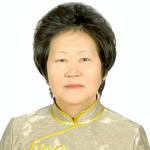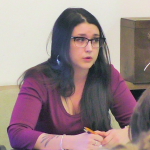© 2016 G.B. Kopeliovich, K.D. Arakchaa
Galina Kopeliovich is interviewing Kara-Kys Arakchaa

 Key words: arjaany, water springs, balneology, water treatment, medical anthropology, the Republic of Tuva, ethnomedicine
Key words: arjaany, water springs, balneology, water treatment, medical anthropology, the Republic of Tuva, ethnomedicine
Abstract: Arzhaans, natural healing springs, play an important role in the contemporary Tuvan culture. To date, there have been registered 107 natural healing springs used by the local population for therapeutic and preventive purposes (Arakchaa, Kujuget 2013). Since 1989, systematic studies of natural curative sptrings have been carried out in Tuva. A total of 78 arzhaanas were examined according to 50 criteria (Arakchaa, Kuzhuget 2013, Bukaty et al. 1993). Indeed, mineral arzhaans have medicinal properties, and are actively used for the prevention and treatment of diseases of the musculoskeletal system, cardiovascular system, gastrointestinal tract, respiratory organs, nervous and skin diseases.
However, along with mineral springs, fresh arzhaans (Bel, Alash, Ala-Taiga, Aspaty, Taldyg-Charyk, Bora-Shai, Kara-Sug, Uuraylyg, Mannaylyg, Churek-dorgun, etc.) are equally popular. Their medical benefits were not scientifically proven. This suggests that for the visitors of the Arzhaans more important are sacred functions attributed to these springs, rather than scientific data.
References
Arakchaa K.D., Kuzhuget K.S. (2013) Prirodnye vodnye lechebnye resursy respubliki Tyva: sostoianie i perspektivy issledovaniia [Natural water medicinal resources of the Tuva Republic: the state and prospects of research].
Bukaty M.B., Arakchaa K.D, Surnin A.I. i dr. (1993) Issledovanie gidrogealogicheskikh uslovii i khimicheskogo sostava arzhaanov Tuvy v sviazi s ikh kliniko-epidemiologicheskimi svoistvami [Study of hydrogeological conditions and chemical composition of Tuva’s arzhaans in connection with their clinical and epidemiological properties (manuscript)].